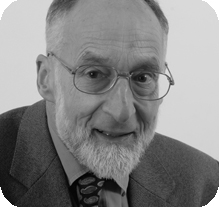
ACM Fellows
United Kingdom - 1994
citation
For three distinct and complete achievements: 1) LCF, the mechanization of Scott's Logic of Computable Functions, probably the first theoretically based yet practical tool for machine-assisted proof construction; 2) ML, the first language to include polymorphic type inference together with a type-safe exception-handling mechanism; 3) CCS, a general theory of concurrency. In addition, he formulated and strongly advanced full abstraction, the study of the relationship between operational and denotational semantics.
ACM A. M. Turing Award
United Kingdom - 1991
READ FULL CITATION AND ESSAYcitation
For three distinct and complete achievements:
- LCF, the mechanization of Scott's Logic of Computable Functions, probably the first theoretically based yet practical tool for machine assisted proof construction;
- ML, the first language to include polymorphic type inference together with a type-safe exception-handling mechanism;
- CCS, a general theory of concurrency.
Working in challenging areas of computer science for twenty years, Robin Milner has the distinction of establishing an international reputation for three distinct and complete achievements, each of which has had and will continue to have a marked, important, and widespread effect on both the theory and practice of computer science:
1. LCF, the mechanization of Scott's Logic of Computable Functions, probably the first theoretically based yet practical tool for machine-assisted proof construction.
2. ML, the first language to include polymorphic type inference together with a type-safe exception-handling mechanism.
3. CCS, a general theory of concurrency.
In addition, he formulated and strongly advanced full abstraction, the study of the relationship between operational and denotational semantics.
A key ingredient in all of his work has been his ability to combine deep insight into mathematical foundations of the subject with an equally deep view of the key engineering issues, thus allowing the feedback of theory into practice in an exciting way. Further, his style of scholarship, rigor, and attention to aesthetic quality sets a high example for all to follow.
